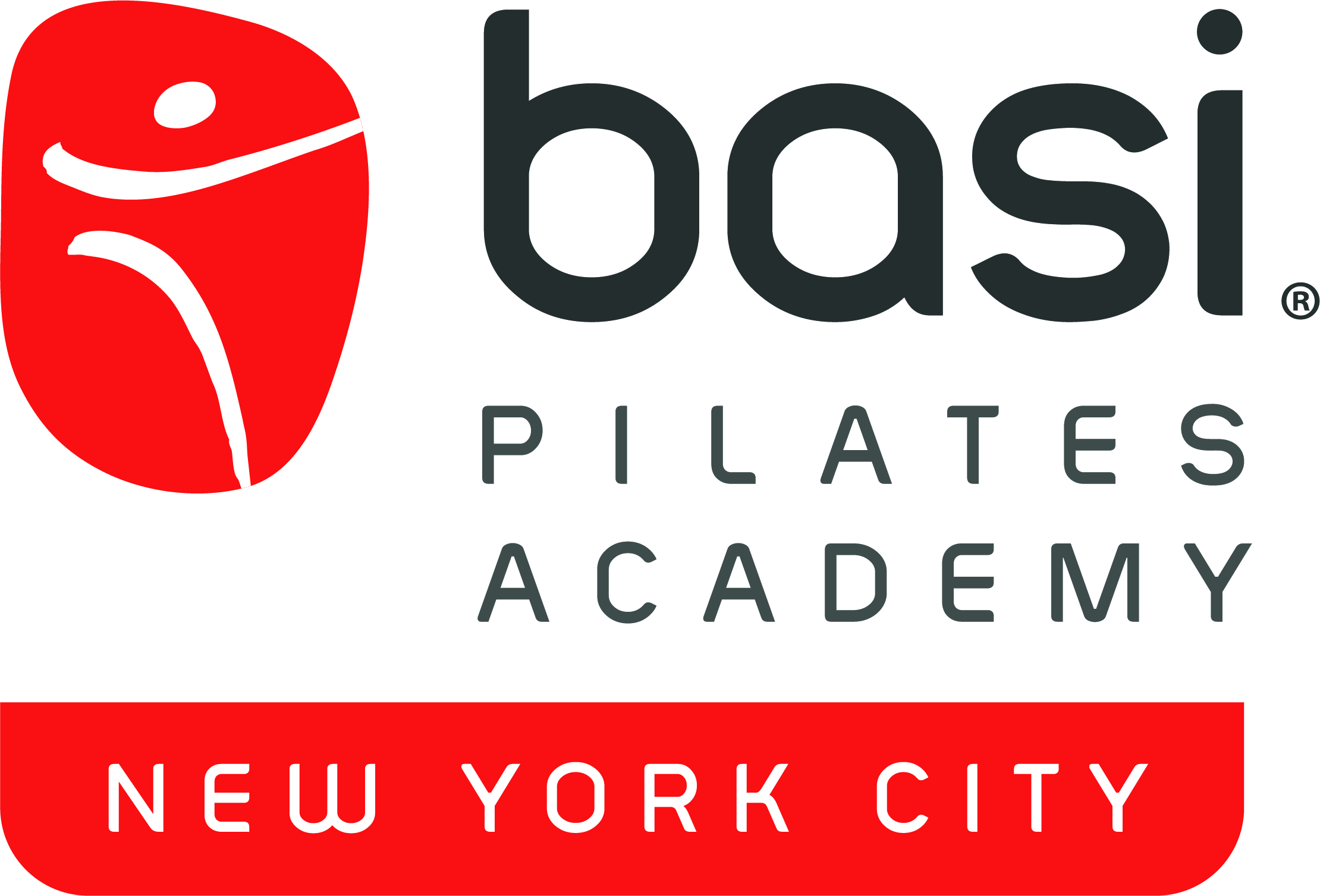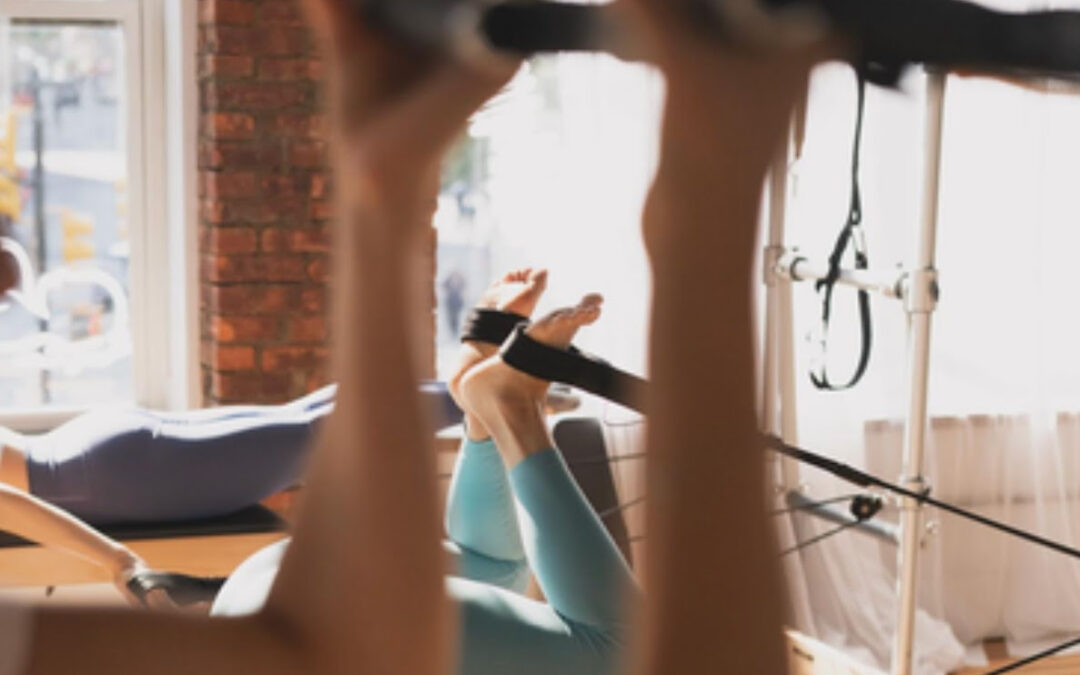5 Ways That Pilates Will Enhance Your Gym Workout, Any Workout,
& Everything Else 🙂
How about Pilates and the gym? Pilates doesn’t like to compete. In my 30 years of real life Pilates experience (not including social media) I have always found Pilates enthusiasts to love all movement studies, especially my fellow BASI instructors. Pilates is like a parent who educates you in the best way possible and hopes that as you enter a world with many choices, your body is a well tuned machine capable of anything that comes its way.
So as a Pilates student, BASI Pilates faculty, studio owner, dancer, and adulthood skier, biker, and occasional hiker:) I absolutely assure you that the awareness given to you from a Pilates education will breed longevity, efficiency, effectiveness and a joyful awareness in all of your movement endeavors. So don’t choose between Pilates and the gym. Don’t pit yourself against yourself. Do it all and see for yourself. Instead of pilates vs gym, here are 5 ways to enhance your gym workouts forever by incorporating Pilates.
You can’t fully reap these benefits by reading this, but it might be a good start. You have to get the Pilates principles and repertoire in your body and feel what it does for you. I encourage you to try some classes or privates and let your teacher know what it is you want to improve on or do forever. At our studio BASI Pilates Academy – NYC, part of our intake on new students is what these specific goals are.
1. Pilates incorporates a set list of principles. All of the principles all of the time. In BASI Pilates we name 10 principles each with literal and metaphoric meanings. Awareness, Balance, Breathe, Center, Control, Concentration, Precision, Efficiency, Flow & Harmony.
When in the gym: You will get so much more out of your workouts, both cardio and strength training if you hold energy throughout the entire body, from the crown of the head to your toes and your fingertips. For example, when using the lat pull machine, feel your feet pressing into the ground, the connection of your hands holding the bar, and lengthen your head and neck. Activate the abdominals to maintain healthy spine alignment. Identify the lower trapezius and lat muscles before you even begin pulling the bar down.
2. Pilates works all the muscle groups in concentric, eccentric, and isometric contractions.
When in the gym: Add some repetitions to focus on the lengthening part of a contraction to shift the focus to quality of movement and moving your muscles with resistance. For example, on the leg press or hamstring curl machine, try not to crash the machine on the return. Resist the return of each movement on all of the equipment.
3. Pilates uses the spine in flexion, extension, lateral flexion, and rotation. This along with the previous points are organized though the BASI Pilates Block System which we teach in the BASI Pilates Comprehensive Program.
When in the gym: Set up a plan before you start. Follow a set simple warm up to avoid injuries and set the mood for your session. Decide on a cycle to perform at the gym, to move through once or to repeat, rather than randomly going from one thing to the next, with mindless breaks in between. A body builder may choose upper or lower body and hyper focus on strengthening specific body parts on a given day. For an overall workout, consider the combination of cardio bursts, between strengthening abdominals, arms, legs, and back. Each time through your cycle you can choose a different exercise with a different specificity, or simply repeat the same ones. Ending with back extension is a signature in BASI Pilates programming since we want the support of all the strong surrounding muscles. Writing out a structure in your phone to take with you will help you stay time efficient and will keep your mind and body in “workout mode.” Try to form constructive rest moments between sets. These might be a stretch or meditative moment. For example after a set of squats, I like to roll down for a hamstring stretch and spinal articulation. Other times I take calf raises or light stretches in a side lunge. Take this moment to breathe, reset your posture and prepare for another set.
4. Pilates repertoire focuses on stability of a structure or joint against mobility of the spine or limb in action. This is one of the most unique aspects of the Pilates repertoire which can affect movement quality and the development of the body’s truest and most functional “core.”
When in the gym: Most gym equipment gives you stability to isolate a muscle in one range. In Pilates exercises, we are additionally meant to include the work of a whole group of muscles to stabilize against the mover and to cancel out unwanted movement- Hence why we often work multiple muscle groups at once even if the primary focus of the exercise “movement” is the abs, arms, legs, back, hips, or shoulders. A good example of this is side lying hip work on the mat or on the various Pilates apparatus. In the BASI Pilates Program, we put great emphasis on isometric oblique engagement along with hip extensor inclusion to both stabilize the pelvis and ensure proper muscle recruitment of the hip abductors including the gluteus medius and minimus. An example with gym equipment is on the knee extension machine, you are emphasizing the quadriceps. Here I like to sit up away from the back rest and hold my arms straight up in the air rather than sitting back and holding on. I find I work my core muscles deeper which creates a better hip socket position around my femur bones…which equals hip health. This benefits the hip mechanics while also encouraging my body to emphasize the eccentric quad contraction/ knee flexion on the return. I usually can’t do as much weight as when I allow the support of the equipment, but as always, I encourage you to try both options and see how it feels.
Pilates emphasizes correct alignment and high quality movement as a priority over range of motion or the number of repetitions. When in the gym: Remember that discipline provides freedom. And it is ok to let the “perfect” alignment go sometimes as a trade off for building strength. Try the first few reps in your best form possible, and then when you feel the form starting to get lost, work a few more reps, take a break, repeat. Most importantly, know the form you might be swaying from. To summarize: Let all of your movement endeavors inform each other. One of my super powers as a teacher is drawing upon the unique positive qualities of my students as movers and applying them to the aspects of their athletic life that seek improvement. We should not all try to be the same in our efforts and intentions even when working toward a codified system like the method of Pilates or set gym routines. We need to identify our strengths and weaknesses, along with tendencies in habit and posture to determine where to put efforts to achieve the common goal of mastering our sport, achieving longevity in our functional movement, and simply feeling good. You may be a dedicated runner with a strong focus and ability to concentrate but don’t like complicated choreography… so we keep the body in the same plane for a bundle of exercises for simplicity and a chance to focus. A body builder may feel bored if we work the springs too lightly…so we might try certain exercises heavy first and then lighter for more core work as a comparison. A dancer who can hyper focus on details may need to be pushed to breathe and trust themselves moving in a smaller range with more resistance. Someone who has a severe lordosis may need to bias their pelvis toward a posterior tilt at times while someone else needs to send their pelvis more anterior or tail bone slightly back depending on the play of gravity.
I could go on and on.
A true athlete will learn and apply accumulated knowledge to their craft and always seek to learn more. Let your work in the gym inform your Pilates lessons and let Pilates inform your gym sessions.
What to do first? I usually do Pilates first if I’m doing another type of workout or sport that day, but this weekend I did some weight training at the gym and my muscles were so warm which increased my range of motion and my Pilates matwork felt stronger and lighter.
Try it all and feel for yourself!
Feet Work (heels)
Feet Work – Single Legs
Double Leg (abdominals)
Shrugs and Tricep Press
Swan Prep
Long Stretch
FOLLOW US
For full length videos that benefit our scholarship program visit Virtualogic.earth

